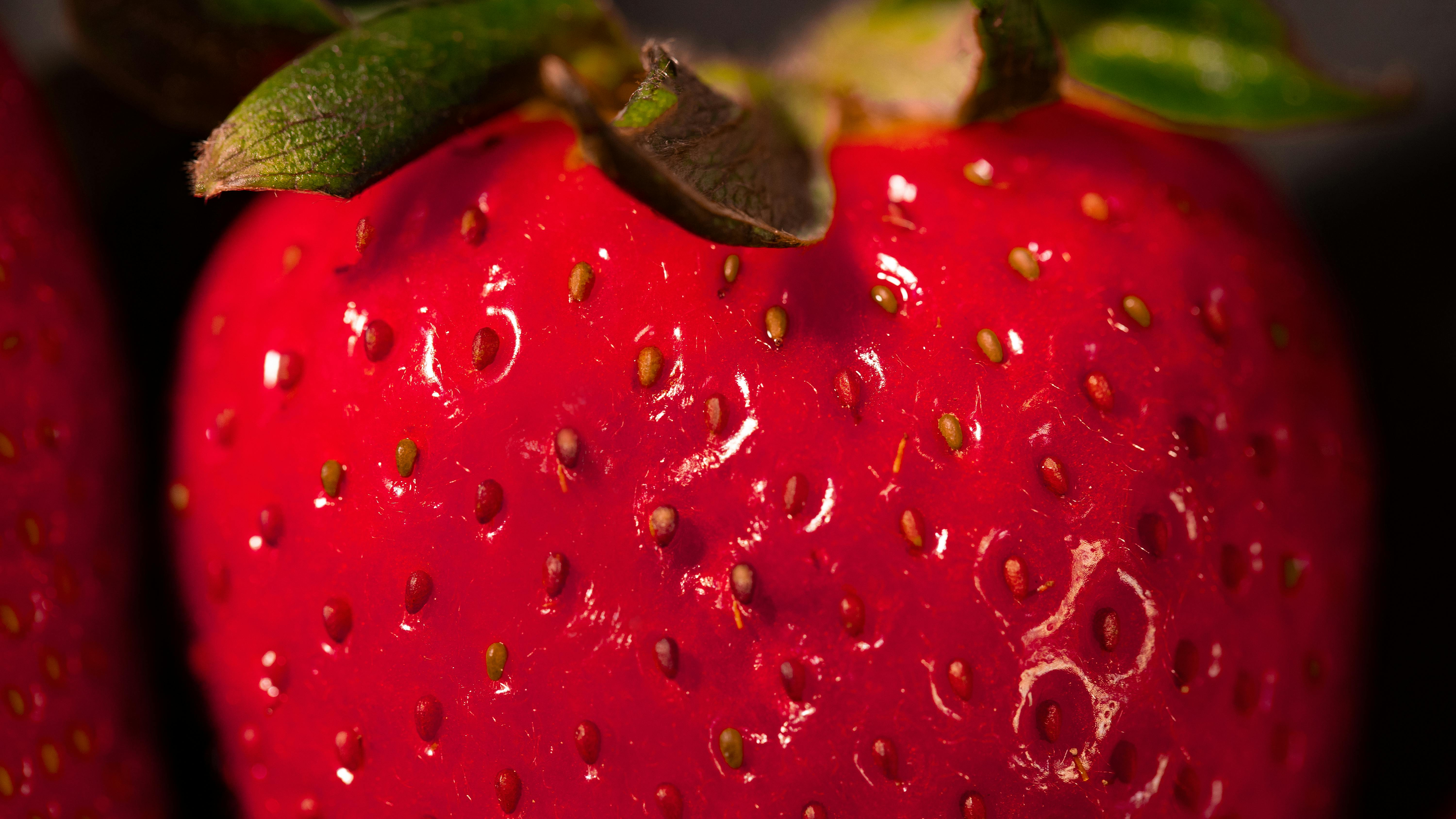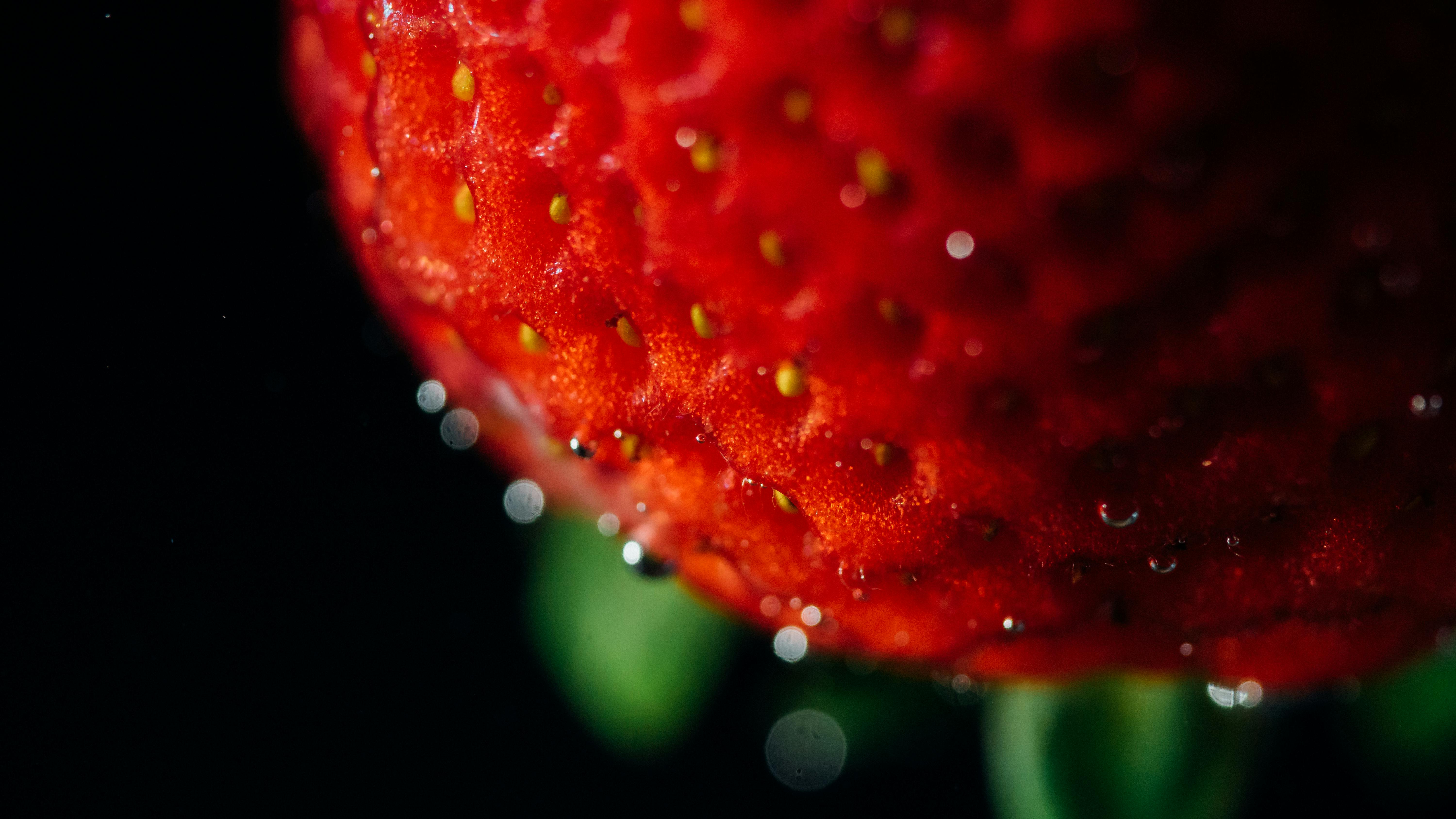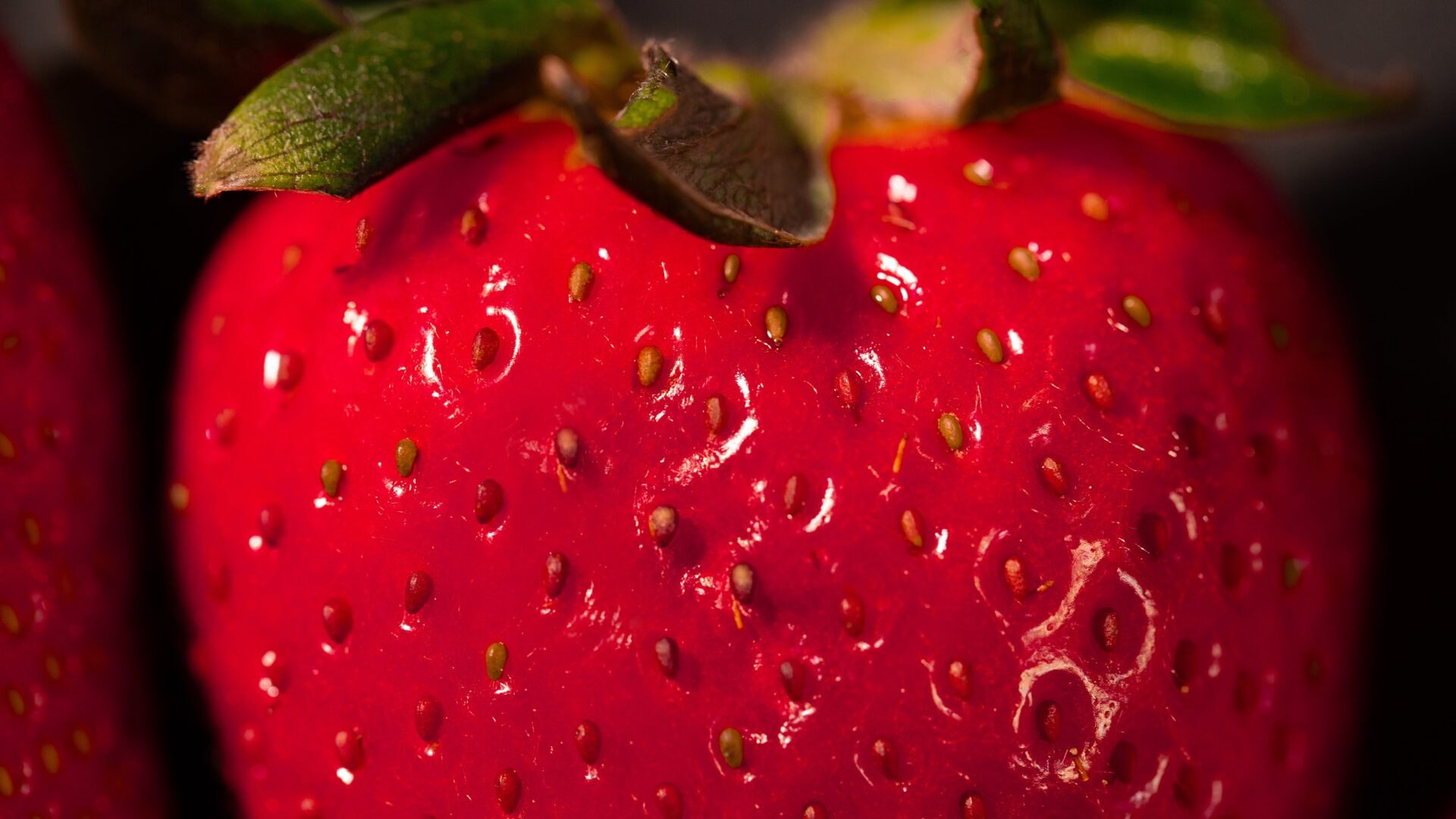Strawberry plants are one of the most popular fruits and can be grown in a variety of climates. If you’re planning to start your own strawberry patch, you may be wondering how long it takes for strawberry seeds to germinate. The answer is that there is no single answer. The time it takes for strawberry seeds to germinate can vary depending on the type of seed, planting conditions and other factors. In this article, we’ll discuss what affects the germination rate of strawberry seeds and provide tips on how to get your strawberries off to a good start.It typically takes between 5 and 7 days for strawberry seeds to germinate. However, this can vary depending on the temperature and moisture of the environment the seeds are in.
Temperature
Temperature plays a major role in the germination of strawberry seeds. If the temperature is too low, the rate of germination will be significantly slower than at optimal temperatures. Generally, strawberry seeds will begin to germinate when the soil temperature reaches between 45°F (7°C) and 85°F (29°C). Optimal temperatures for seed germination range from 68°F (20°C) to 77°F (25°C). Temperatures above or below this range may lead to slower germination times or even failed germination.
Moisture
Moisture is another important factor in strawberry seed germination. The soil should be kept moist but not overly wet, as too much water can cause the seeds to rot before they have a chance to sprout. Depending on the soil type, it may need to be watered regularly to maintain moisture levels. The best way to tell if the soil is adequately moist is by feeling it; if it feels dry then it needs more water.
Light
Light also affects how quickly strawberry seeds will germinate. Strawberry seeds need light in order for them to sprout; however, they should not be exposed to direct sunlight for extended periods of time as this can cause them to overheat and die. Instead, they should be kept in an area that receives indirect light or artificial light such as fluorescent light bulbs.
Soil Type
The type of soil also affects how quickly strawberry seeds will germinate. The ideal soil type for strawberry seed germination is a sandy loam with a pH between 6 and 6.5. This type of soil allows for adequate drainage while still retaining enough moisture for the seeds to grow properly. Soils that are too dense or have poor drainage can lead to slower germination times or even failed attempts at germination.
Common Germination Period for Strawberry Seeds
Strawberry seeds have a relatively short germination period, usually taking between 10 and 14 days. Depending on the variety of strawberry, the germination period can be shorter or longer. The most common varieties of strawberries have an average germination period of between 10 and 14 days. During this period, the seeds must be kept at a temperature between 65 and 75 degrees Fahrenheit for optimal results. If the temperature drops below 65 degrees F, the germination process may be delayed or stopped altogether.
Once germinated, strawberry seeds should be moved to a sunny location with plenty of water and nutrients to help them grow into healthy plants. It is important to keep the soil consistently moist throughout the growing period. Once the plants are established, they should be watered deeply once a week or when the top inch of soil begins to dry out. Applying a layer of mulch can also help keep weeds at bay and retain moisture in the soil.
Harvesting strawberries typically begins about two months after planting and continues until early fall. Strawberries are usually ready for picking when their tops turn bright red and they easily come off their stems when touched gently with your fingers. Carefully inspect each berry for signs of damage or disease before consuming or storing them away for later use.
Proper Soil Preparation
Proper soil preparation is key to helping strawberry seeds germinate quickly. The soil should be light and well-draining, with a pH level between 6.0 and 6.5. Mix organic compost into the soil to provide the necessary nutrients for the plants to grow. To ensure good drainage, mix in some coarse sand or perlite into the soil.
Temperature Control
Temperature control is also important for successful germination of strawberry seeds. Keep the soil temperature between 65°F and 70°F for optimal germination. If the temperature drops below 65°F, it can delay or even prevent germination altogether.
Moisture Level
The moisture level of the soil should be kept consistent throughout germination for best results. Make sure to keep it moist but not soggy by watering regularly with a spray bottle or mister. Avoid over-watering as this can lead to mold growth which can harm the seeds.
Light Conditions
Light conditions are important for successful germination of strawberry seeds as they need light to grow properly. Place them in an area that gets plenty of natural sunlight or use artificial lighting if necessary. Make sure that the plants get at least six hours of direct sunlight per day.
Seed Treatment
Seed treatment can help speed up germination of strawberry seeds as well. Soaking them in warm water overnight before planting can help them break dormancy and start growing more quickly. Another option is to use a seed starter mix which will help keep moisture levels consistent and provide essential nutrients for healthy seedling growth.
Different Stratification Requirements for Different Varieties of Strawberry Seeds
Strawberry seeds require a process called stratification in order to germinate. Stratification involves exposing the seeds to cold temperatures in order to break their dormancy, allowing them to sprout and grow. Different varieties of strawberry seeds have different stratification requirements, and it is important to understand these requirements in order to ensure the success of the crop.
The amount of time that a strawberry seed needs to be subjected to cold temperatures depends on its variety. For some varieties, such as June-bearing strawberries, stratification may take as little as two weeks. Everbearing and day-neutral strawberries may require up to four weeks of cold exposure in order to sprout.
The temperature at which a strawberry seed is exposed is also important for successful germination. June-bearing and everbearing varieties should be exposed to temperatures between 34 and 41 degrees Fahrenheit, while day-neutral varieties should be exposed at temperatures between 30 and 40 degrees Fahrenheit. It is also important to note that the temperature should be consistent during this period; fluctuations could cause the seeds not to germinate properly.
Once the stratification period has ended, the strawberry seeds can be planted in prepared soil or a potting mix. It is important that they are planted at the appropriate depth – typically about one half inch deep – and covered lightly with soil or potting mix. The soil should then be kept consistently moist until after germination has occurred.
By understanding the different requirements for each variety of strawberry seed, it is possible for gardeners and farmers alike to ensure that their crops are successful. By following these guidelines, gardeners can enjoy fresh strawberries from their own garden with minimal effort!

The Best Temperature and Humidity Conditions for Germinating Strawberry Seeds
Germinating strawberry seeds is a fun and rewarding experience. It can also be quite tricky to get the right temperature and humidity conditions for the best results. Temperature is one of the most important factors for successful germination, as too high or too low temperatures can cause poor germination rates or even prevent seeds from germinating at all. Humidity is also important, as too little moisture can prevent the seeds from absorbing enough water to sprout, while too much moisture can lead to mold growth.
The optimal temperature range for germinating strawberry seeds is between 65-75°F (18-24°C). For best results, try to maintain an average temperature of 70°F (21°C). If you are using a heat mat or pad, make sure it does not exceed 80°F (27°C). Too much heat can damage or even kill the seeds. It’s also important to keep in mind that temperatures above 85°F (29°C) can cause poor quality seedlings with weak root systems.
Humidity is another important factor when it comes to successful germination. The ideal relative humidity level for germinating strawberry seeds should be between 70-80%. If you are using a humidity dome, make sure it does not exceed 90%. Too much moisture can lead to mold growth which will damage your seedlings. If your area has a low relative humidity level, you may need to use a humidifier or mist the soil with a spray bottle periodically throughout the day.
Overall, having the right temperature and humidity conditions when germinating strawberry seeds is critical for successful results. Make sure you keep an eye on both temperature and humidity levels in order to ensure your seedlings have the best chance of growing healthy and strong!
Signs That a Strawberry Seed Has Successfully Germinated
One of the signs that a strawberry seed has successfully germinated is the appearance of a small sprout. This sprout will be very thin and delicate, and is usually only visible when the soil is gently moved aside. The sprout will be a light green color and can be found near the surface of the soil.
Another sign that a strawberry seed has germinated is root growth. This can usually be seen within a week or two after planting, with fine white threads extending down from the seed into the soil. As these roots grow, they will become larger and more visible over time.
The third sign that a strawberry seed has germinated is the emergence of leaves. These leaves will be small and rounded in shape, and may have some slight variation in color depending on the variety of strawberry plant being grown. Leaves will generally start to appear within two weeks or so after planting, though this can vary depending on environmental conditions such as temperature, humidity, and sunlight.
Finally, once the leaves have matured enough to reach their full size, flowers should begin to appear as well. These flowers will generally be white or pink in color, depending on the variety of plant being grown. This usually occurs within three to four weeks after planting, though again this can vary depending on environmental conditions. Once flowers have appeared, it’s likely that fruit will soon follow!
How to Tell If a Strawberry Seed Has Failed to Germinate
Knowing whether or not a strawberry seed has failed to germinate can be important in determining the success of your crop. While it is impossible to tell for certain, there are several signs that can help you assess whether or not a particular seed has been successful in its germination.
The most obvious sign is the presence of a sprout. If you have planted the seed but have yet to see any growth over the course of several weeks, then it is likely that the seed has failed to germinate. Similarly, if you notice that there are no new shoots emerging from the soil or that the existing shoots are wilting and dying off, then this could be another indication that your seeds have not successfully germinated.
It is also possible to determine if a strawberry seed has failed by examining its outer shell. If you notice that the seed coat is damaged or has started to break apart, then this could be an indication of unsuccessful germination. Additionally, if there is no visible sign of root growth coming from underneath the soil, then this could also indicate that the seed has failed in its attempt at growth.
Finally, if you are still unsure whether or not your strawberry seeds have germinated successfully, it may be wise to consult with an experienced gardener or horticulturalist who can provide more insight into your situation. With their expertise and advice, you should be able to make an informed decision about whether or not your seeds have been successful in their attempt at germination.

Conclusion
Strawberry seeds typically take between 7 and 30 days to germinate, depending on the variety and growing conditions. The ideal temperature for strawberry seed germination is between 59 and 77 degrees Fahrenheit. Seeds should be kept moist but not soggy for the best results. Properly prepared strawberry seeds can be stored in a cool, dark place for several years before they need to be replaced. With a little patience and care, you can successfully plant and grow your own strawberries at home.
Growing strawberries is an enjoyable gardening experience that can provide you with an abundance of sweet, delicious fruit over many years. Whether you plan to grow them indoors or outdoors, proper care for the strawberry plants will help ensure abundant crops of healthy fruit. With a bit of knowledge about how long it takes strawberry seeds to germinate and the necessary growing conditions, you can grow healthy strawberries that will give your family plenty of enjoyment for years to come.



